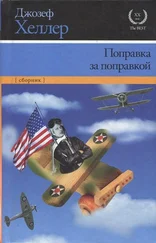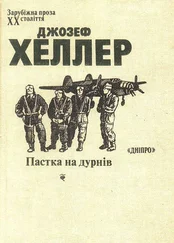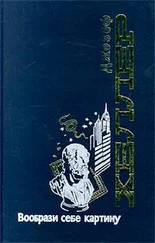It had started with an afternoon call to Schaeffer from a woman named Sharon Marshall. She said she was the daughter of the late Ohio senator and wanted to talk to Schaeffer and Pace. Just the two of them. Nobody else. She wanted to come in after most of the staff was gone so as few questions as possible would be asked about who she was and what she wanted. Schaeffer, wary of such encounters, said he wanted one of the paper’s attorneys present. She refused, protesting there was no need. She said she was not coming to make threats. Schaeffer and Pace had been on edge ever since.
It didn’t take much to put Schaeffer on edge. As Pace counted, the editor’s frustration with the lack of progress on the Marshall angle of the Converse conspiracy had lasted, unbroken, for a month. No one mentioned Harold Marshall’s name in connection with the scandal anymore; it seemed he had taken the secrets of his profound financial success to the grave with him. Schaeffer could not let loose of that, although other developments in the case should have raised his spirits.
Pace was first with the story of how the cover-up conspiracy came unraveled after Converse’s vice-president for corporate relations, Cullen Ferguson, had rebelled against the company’s chief executive officer, George Thomas Greenwood. Greenwood demanded Ferguson sign a sworn affidavit to the effect that he, Ferguson, while still a reporter, uncovered damning evidence about Ken Sachs’s professional relationship with MacPhearson-Paige, a relationship that would support the accusation that Sachs had a conflict of interest when it came to the Converse investigation.
After a nasty argument, Ferguson had appealed to Alan Hirschman, chairman and president of the company. Ferguson complained that Greenwood was acting in an unprofessional, and possibly illegal, manner and was at least partially responsible for the diversion of the NTSB investigation. Ferguson implicated Harold Marshall, too, but that part of his story was ignored by Hirschman and, subsequently, by the federal grand jury. Hirschman began his own internal investigation, and a company auditor uncovered Greenwood’s embezzlement. The chairman toyed with the idea of firing Greenwood and quietly letting the matter drop, but company attorneys advised him that if Greenwood’s illegal activities ever came to the government’s attention, hiding them could prompt legal action against Converse and bring more adverse publicity. So Hirschman went to the FBI.
The FBI went to Ferguson, who set them onto Chapman Davis. Davis held out briefly against the pressure, but with Greenwood no longer around to support him, he had nowhere to fall back. He told the agents everything. That included the story of how he was first recruited by Marshall and later used for dirty political assignments by both the senator and Greenwood. Davis also gave up Sylvester Bonaro and Wade Stock and fully explained Elliott Parkhall’s role in the Converse cover-up. The Ohio grand jury took it from there.
A week earlier, Ferguson had been deleted as an unindicted coconspirator on grounds that by reporting the crime to a higher company authority, he’d stepped out of the conspiracy. It was a fine point that didn’t take into account the weeks Ferguson spent at Greenwood’s elbow, watching him concoct and direct the cover-up, but Pace could live with it. Nobody asked him, actually.
The D.C. grand jury indicted Greenwood, Davis, Bonaro, and Stock on federal civil rights charges in connection with Mike McGill’s murder. The Virginia grand jury returned indictments for murder against the same four in the Antravanian killing, and against Davis and Greenwood in Parkhall’s death. Neither Bonaro nor Stock had been found. Both made the FBI’s most-wanted list.
There was general agreement within the profession that Pace was the hands-down favorite for a Pulitzer Prize in national or local reporting, but even that consensus failed to assuage Avery Schaeffer’s anger over the lack of progress on the Marshall angle.
Pace guessed that anger was at the root of the editor’s unease over the upcoming meeting with Marshall’s daughter.
The reporter saw the event was at hand when a dark-haired woman, who appeared to be about forty, showed up in the newsroom at 8:25. She stopped at the receptionist’s desk, and Pace saw the receptionist pick up her telephone. He saw Schaeffer do the same a few seconds later. The receptionist pointed the way, and the woman walked toward Schaeffer’s office. She was painfully timid. Every time she approached an occupied desk, she moved to the far side of the aisle as if afraid something would reach out and grab her. She kept her eyes lowered in the way a person does when she hopes that if she doesn’t see you, you won’t be able to see her. Pace felt sorry for her.
He saw Schaeffer rise politely when she walked into his office, shake her hand, and point her to one of the chairs in front of his desk. They chatted for a moment, and then the editor reached for his phone. Pace put a hand on the receiver of his, expecting the buzz that came a second later.
“I guess my blind date’s here,” he said without preface.
“Steve, could you come in?” said Schaeffer, not responding to Pace’s lame humor.
“Sharon Marshall, this is Steven Pace,” Schaeffer said. The woman stood quickly and extended her hand. Pace accepted it. Her grasp was weak and moist. “Why don’t we all sit down?” Schaeffer suggested, and they did. There were a few seconds of awkward silence.
“Miss Marshall… it is Miss Marshall, isn’t it?” Schaeffer asked, and she nodded. “Miss Marshall, you requested this meeting, and we were glad to oblige you. But the hour is late, and we would all like to get home, so could we come right to the point?”
There was the old, blunt Avery, Pace thought.
“Yes, of course,” she said, reddening and obviously flustered. “I’m very sorry I kept you, but the opportunity to talk to the two of you is very important to me. It’s one of the most important things I’ll do this year.”
And I’ll bet she’s enumerated them, Pace thought. Burying your father is number one, probably followed by food and shelter, and closely after that, talking to two journalists.
Pace assessed the woman. She did, indeed, look to be in her forties, although that would have made Marshall a very young father. He decided she must be younger than she looked. Her eyes darted constantly, a disconcerting habit, as was the constant wringing motion she made with her hands as they lay in the lap of her dark paisley shirtwaist dress. Her shoes were plain pumps, medium-heeled and in a green color that came close to matching one of the minor colors in the dress. She wore pearl studs in her pierced ears and a single eighteen-inch strand of pearls around her neck. Simple, effective, and somehow old-fashioned, Pace thought.
“I guess what I came for is to tell you about my family,” she began. Pace found it hard to imagine Harold Marshall as a family man. “There aren’t many people who know United States Senator Harold Marshall had a family,” she continued, “but he did, and I’m one-fourth of it. He had a wife and two children. I’m the older of the children. My younger brother’s name is James.”
“How old are you?” Pace hadn’t meant to interrupt to ask that question.
“I’m thirty-one, and Jimmy’s twenty-six,” she said.
Pace’s face must have exposed his surprise, and he saw her recognize it.
“I know,” she said, lowering her eyes. “Everybody tells me I look older. When I was a kid, I loved it. Now it’s beginning to sound horrible.” She laughed a little embarrassed laugh.
“Anyhow, my brother is what this is all about,” she said. “He has serious health problems. We first started seeing them when he was four. He developed a physical tic, like a muscle spasm he couldn’t control. And he would make crazy sounds, like clicks and grunts and barks. By the time he was seven, he’d developed a compulsion to shout words like ‘shit’ and ‘fuck.’ ” She blushed. “God knows where he picked them up. I don’t think he ever heard them at home. Oh, he also became hyperactive. It’s all part of a disorder known now as Tourette’s Syndrome, but back in the seventies, nobody knew very much about it.”
Читать дальше










